Launched by Giant Bicycles back in 2011, the Liv/Giant range began as a women’s specific line of road, mountain and commuter bikes that were designed by women, for women. In 2015, Liv relaunched as a stand-alone brand with an even stronger commitment to women’s specific product. Hannah was recently invited out to Sedona in the US to check out some of Liv’s new mountain bikes, including the 2017 Hail, while learning more about the company’s ethos to go all-in with women’s specific bikes.
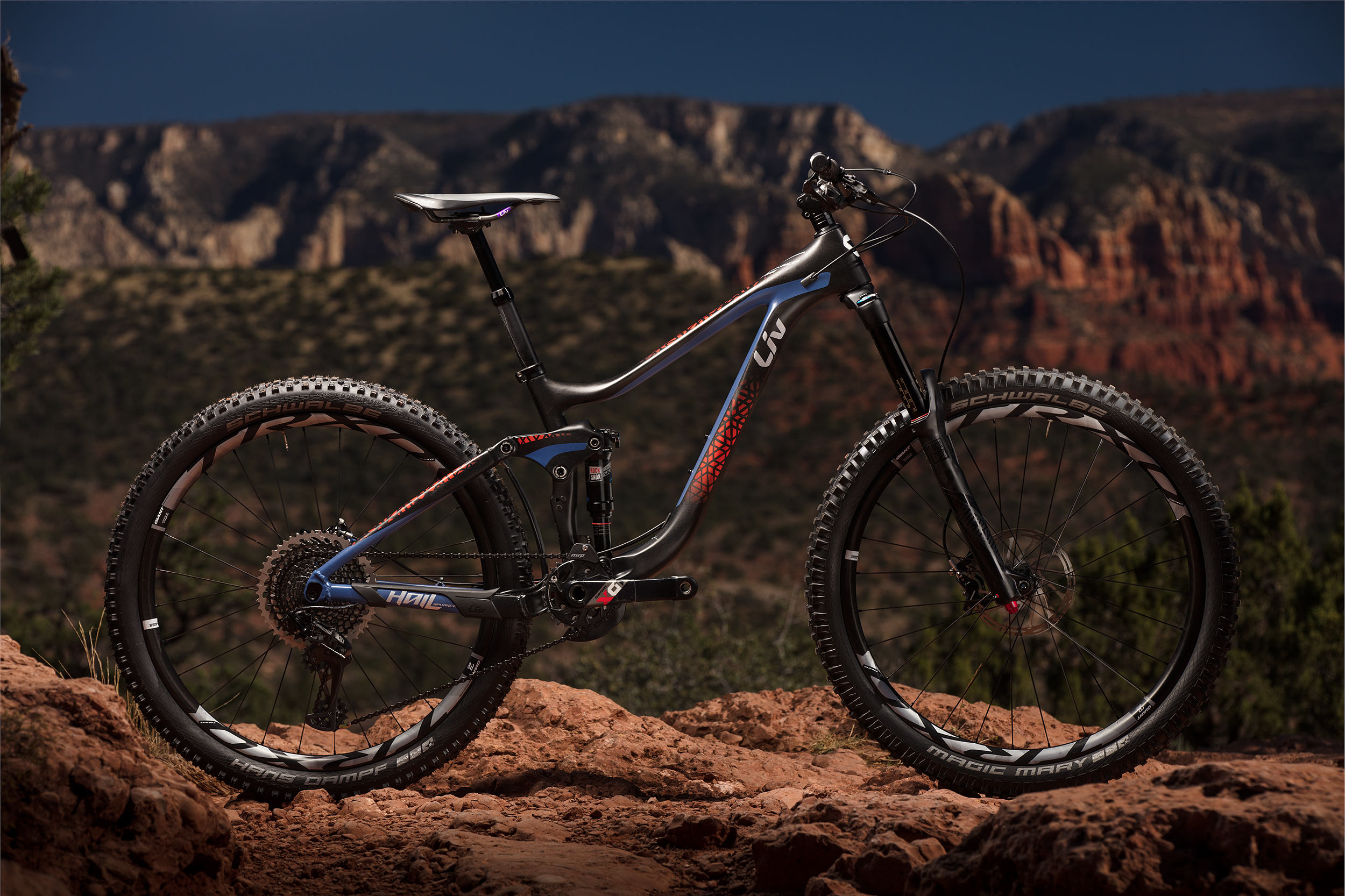
While some companies opt for a unisex frame with women’s specific finishing kit, Liv believes there are key features of women’s bodies that are different enough to warrant a women’s specific approach to bike design, right through from the frame to the finishing kit. First up, Liv claims (and I’m inclined to agree) that women usually have strong lower bodies, with relatively less upper body strength. Along with the strength in the lower body comes a lower centre of gravity – a second key difference – with weight in the hips and legs and less in the torso.
For 2017, the company’s new Hail and Pique bikes have therefore been designed to make the front end easier to lift without needing as much upper body strength. The bikes have also been designed to put women in a position that balances them and keeps the front end under control when climbing and descending.
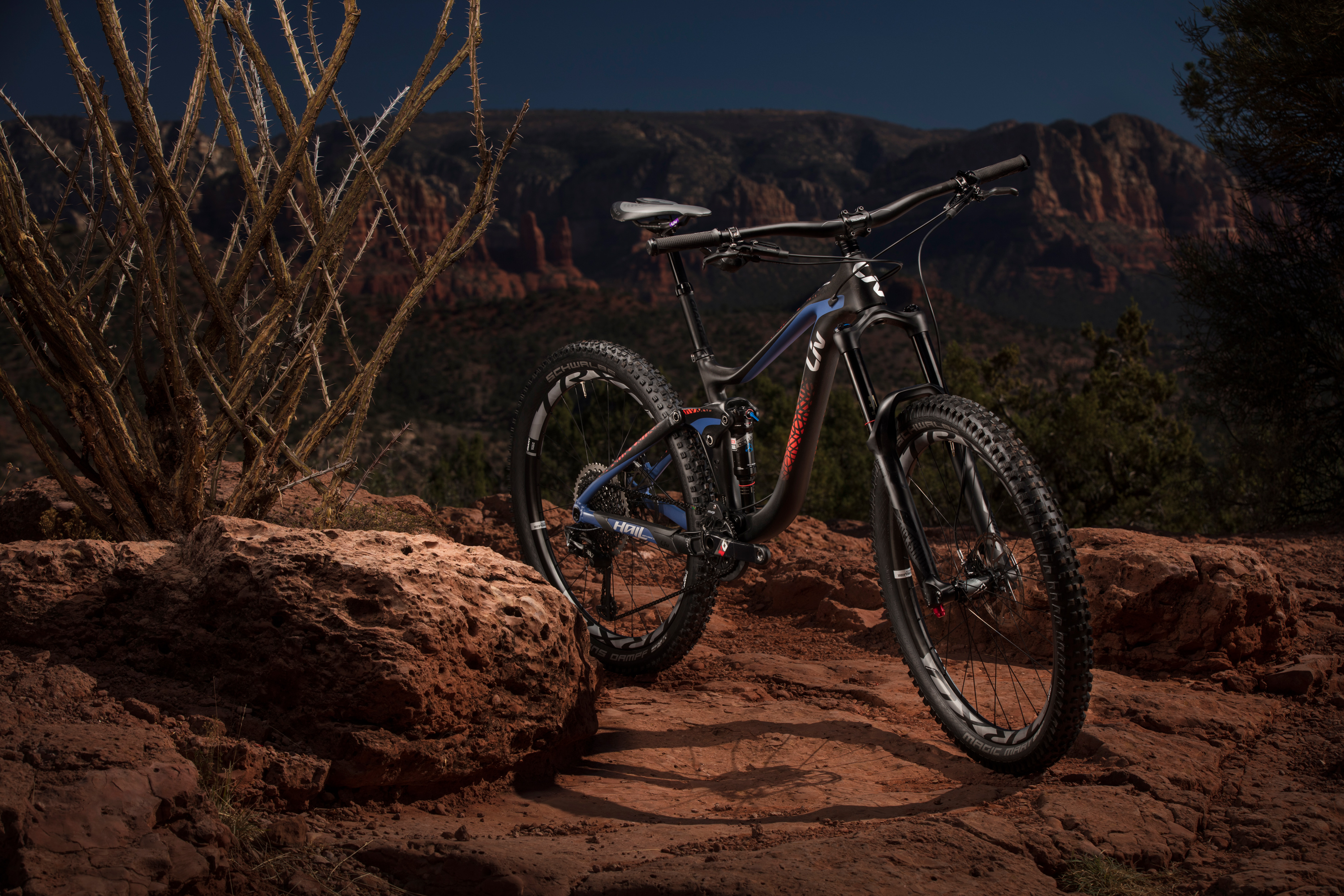
The Liv Hail is a 160mm travel full suspension bike with 27.5in wheels. We first saw the 2017 Liv Hail during the 2016 Eurobike expo, and in essence, it’s the women’s specific version of the highly regarded Giant Reign. Coming in four models – two carbon and two alloy – the Advanced 0 at the top of the range is designed to be as good as any other high end enduro bike on the market – only this one is specifically for women.
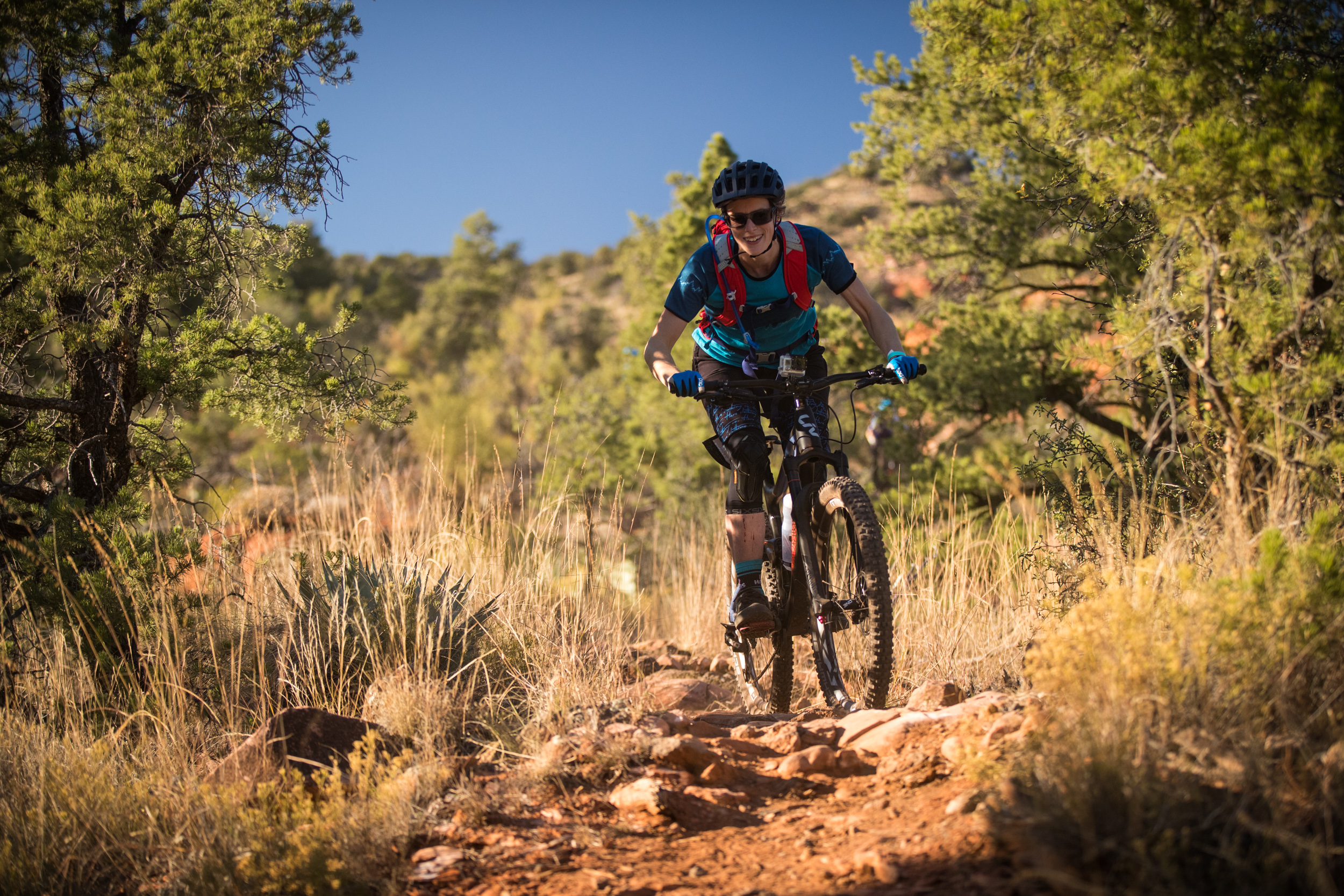
Designed from scratch rather than tweaking the existing Reign, the Advanced 0 combines the latest components with geometry designed to specifically work with the strengths of a woman’s body. The Advanced 1 takes the components down a touch, while the Aluxx SL 1 and 2 repeat the geometry but in an alloy frame. Sadly, it appears that the Advanced 0 will not be on sale in the UK, although this is the only Hail model I had chance to ride on the press trip. Pricing starts at £2,499 for the lowest specced Aluxx model, while the Hail Advanced 1 is £3,749. In the US, the Hail 0 will be $8,250, so there’s a hefty jump in price between 1 and 0 models.
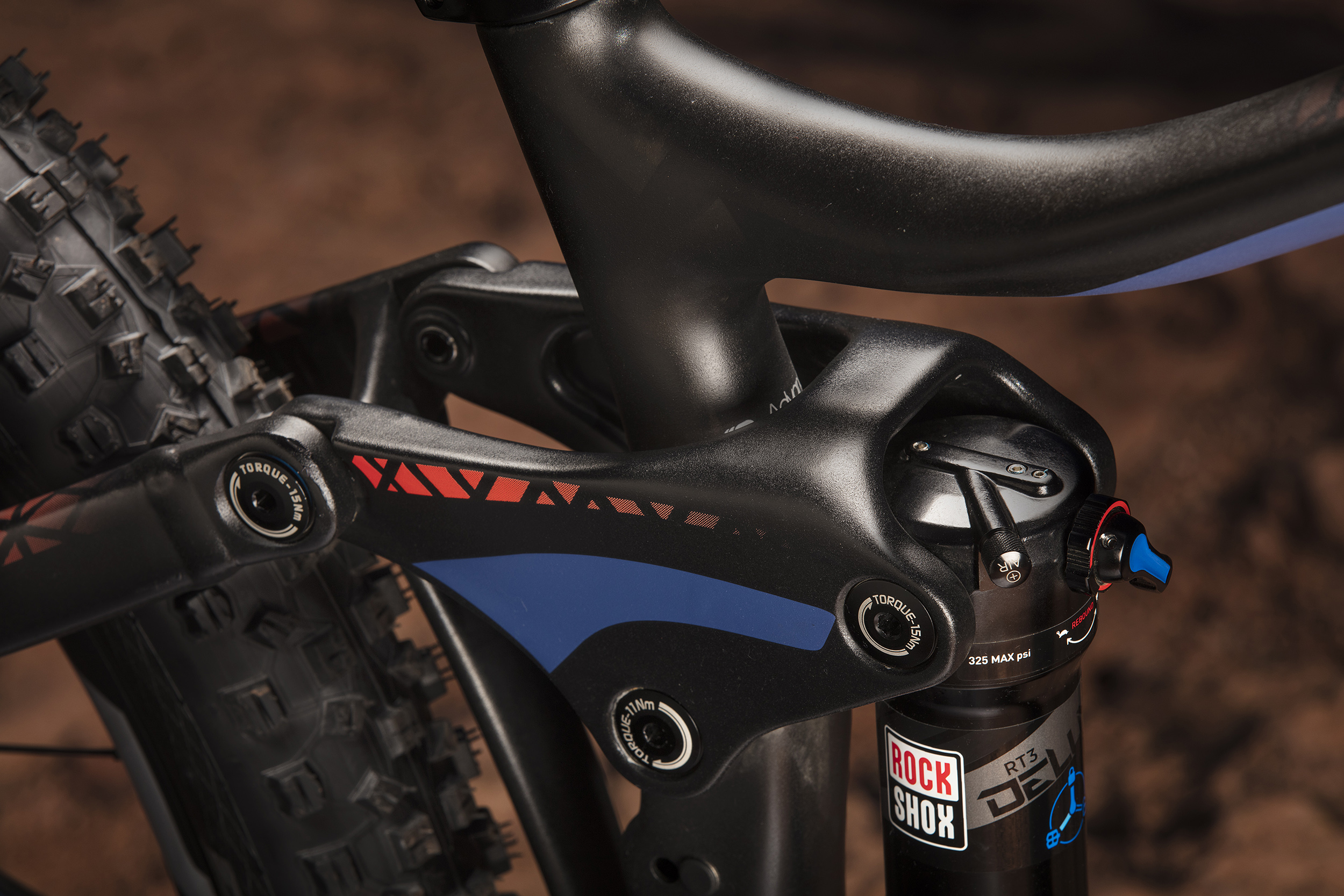
Rear suspension comes from an updated dual link Maestro suspension system with a new and improved Trunnion mount. The new Trunnion mount is made of a specially layered carbon composite that Liv claims makes the mount 50% lighter and 50% stronger than could be achieved in alloy. This mount is not unique to the Liv bikes and is fitted to some of the new Giant bikes for 2017, including the new Giant Trance and Anthem models. It’s also featured on the alloy models of the Hail. This new mount allows the linkage to be joined to the shock at the side of the body rather than the top, which means that a longer shock can be fitted into the same space on the bike.
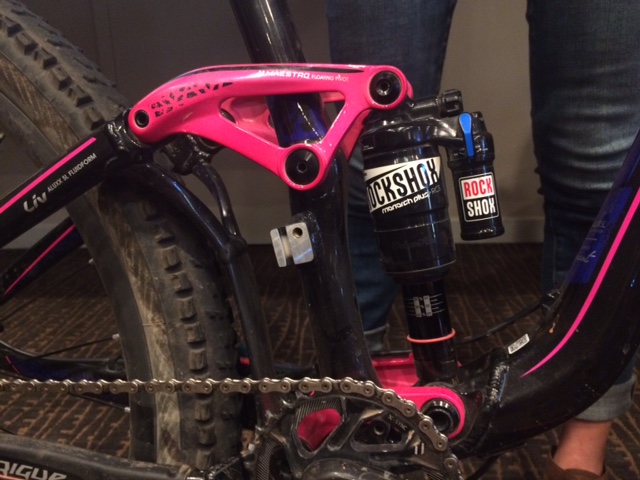
By employing a longer stroke shock for the same amount of rear wheel travel, Liv has been able to go with a lower leverage ratio for the Hail’s rear suspension design. Along with the shock’s larger air volume, the Hail’s rear shock requires lower operating pressures to support the rider. In addition, the lighter Trunnion mount reduces the weight higher up the frame, meaning the weight is lower on the bike, reducing the centre of gravity.
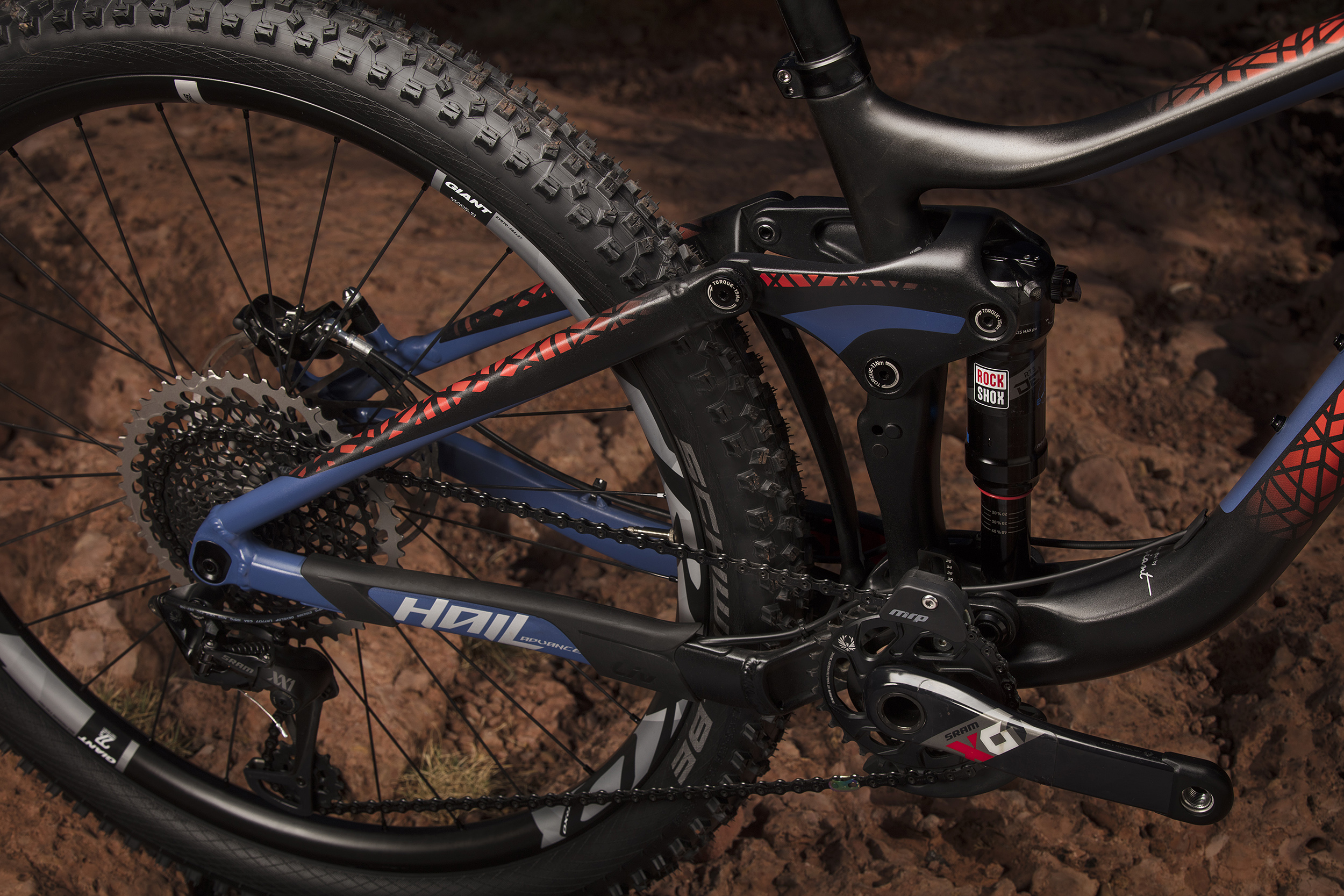
By keeping the centre of gravity low, Liv has been able to have a relatively high bottom bracket compare to what you’d expect from a 160mm bike, without compromising the handling of the bike. This allows riders to pedal over uneven ground with less risk of pedal strikes.
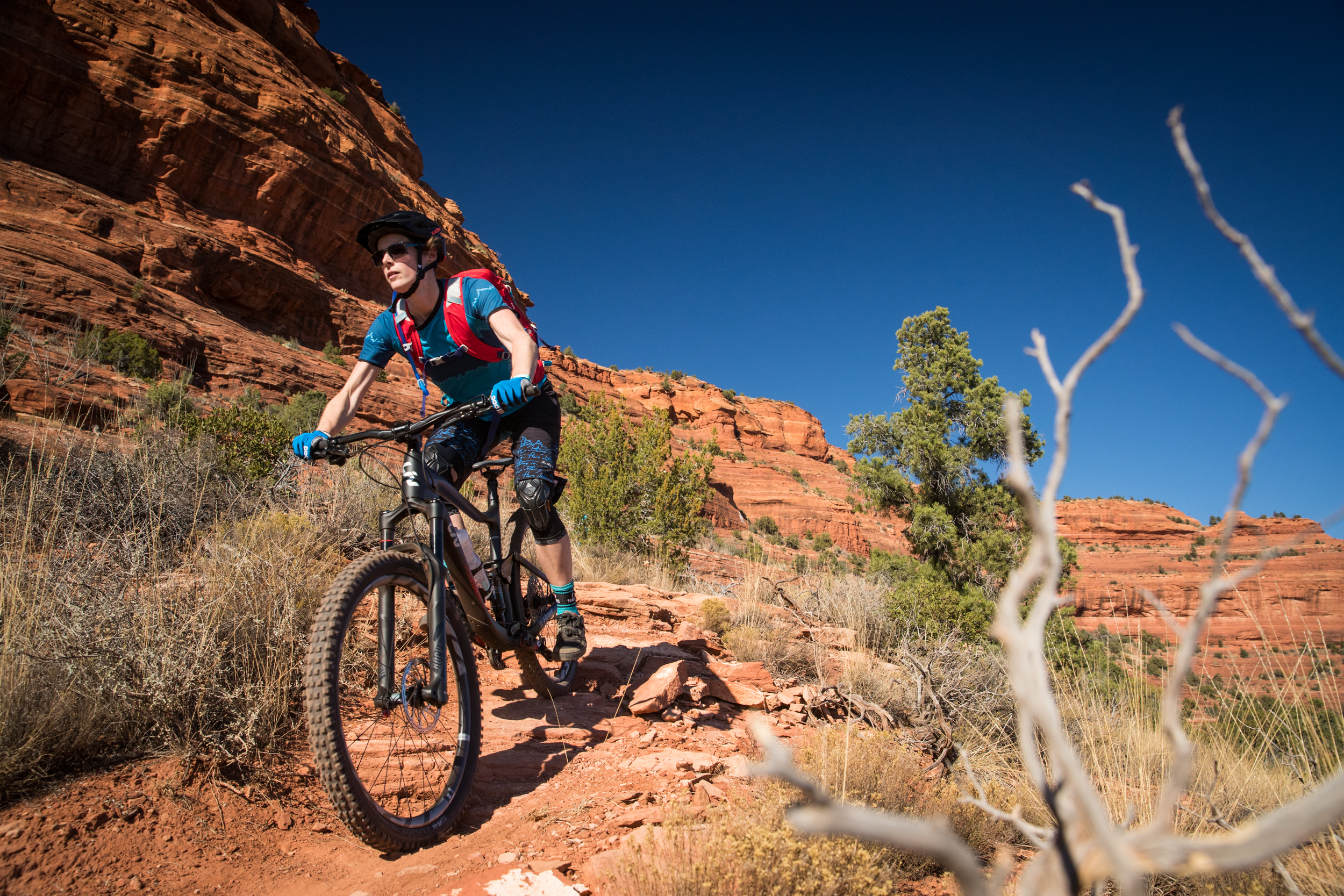
The carbon composite Trunnion mount is fitted to all the bikes in the Hail range, including the alloy bikes, meaning that the geometry on the alloy versions is not compromised by having to accommodate a different shock attachment or weight distribution.
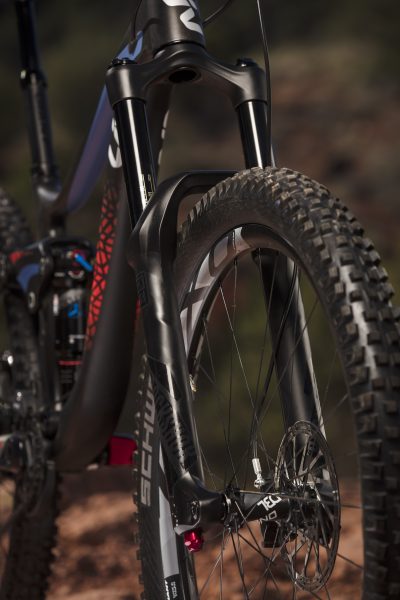
The Advanced 0 comes with a 160mm travel Rockshox Lyrik Dual Position Air fork, with a crown-mounted adjuster that will drop the travel down to 130mm. Combined with the high bottom bracket and active suspension design, this makes for a bike that is designed to climb as well as it can descend. The Fox 36 equipped Hail Advanced 1 also comes with a 2-position setup.
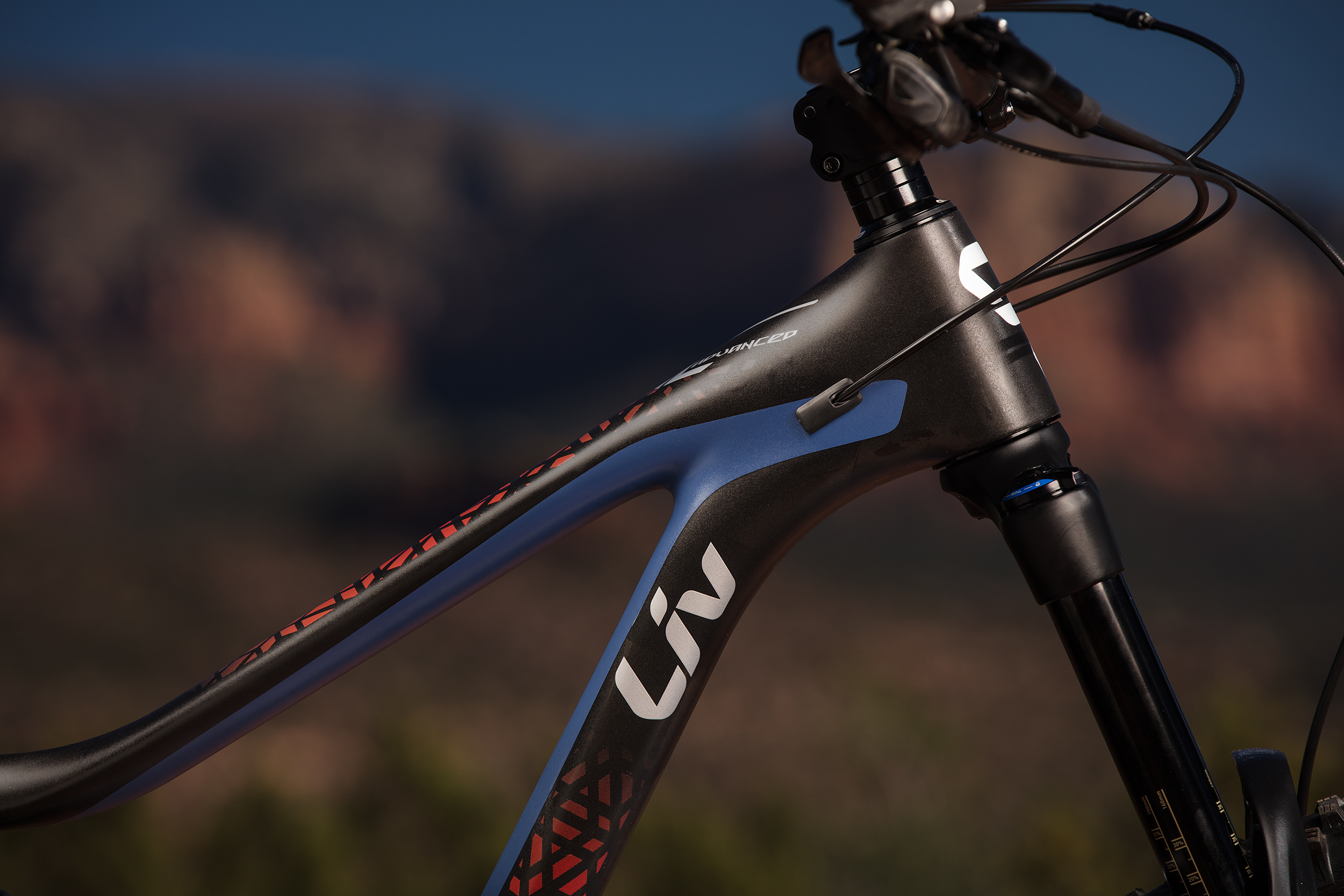
This bike has been designed with input from Liv ambassadors Lindsey Voreis and Leigh Donovan. Lindsey enjoys technical climbs as much as she does the descents, and was adamant the bike should be fun to ride up as well as down. This has contributed to the Hail having a 1-degree steeper head angle compare to the Giant Reign, to ensure the bike is controlled and stable on rocky climbs, and doesn’t wander. Along with a nicely short stem, the front end of the Hail has been designed to make it easier for women to pop up the front wheel.
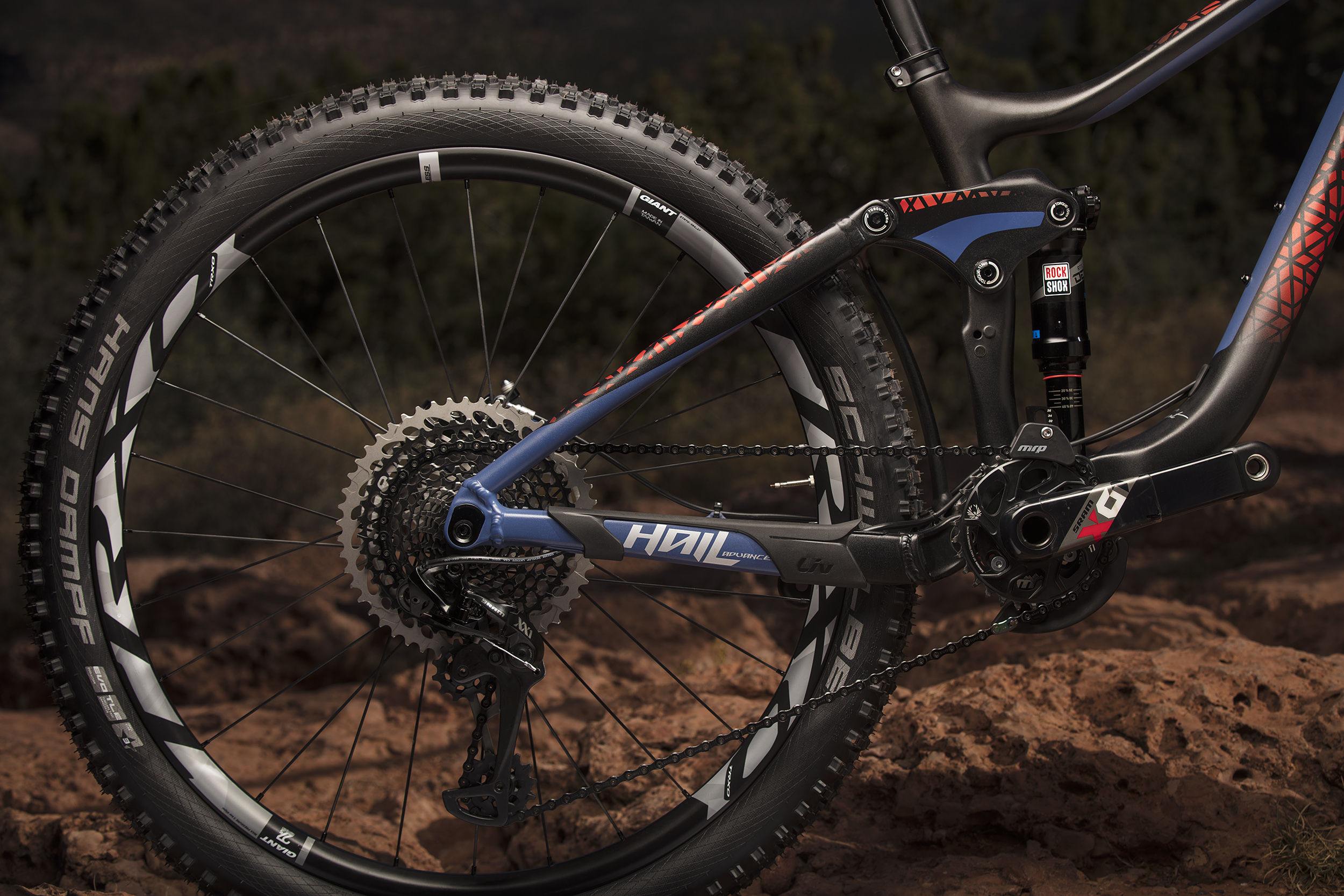
To get you up those climbs, the Advanced 0 comes with SRAM Eagle drivetrain, while SRAM Guide brakes will slow you on the descents, The Guide brakes come fitted with a tools-free reach adjustment dial that quickly and easily adjusts the reach on the levers, ensuring that even the smallest of fingered riders can ride while covering the brakes with just one finger.
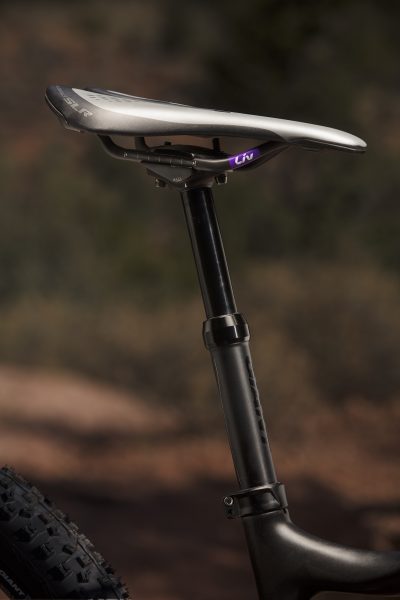
The entire Hail range comes fitted with Giant’s own Contact SL dropper, in 100mm travel across all models.
To promote the Hail, Liv has created a ‘Sick Edit™’ video demonstrating what the bike can do. Leigh, member of both the MTB and BMX halls of fame, admits that she surprised and scared herself making the video, riding huge features she hasn’t ridden since her youngest downhill days. For those of you unfamiliar with Leigh, her racing career started when she beat Missy Giove in the dual slalom final of her first ever race, so she’s no slouch.
Can’t see the video? Click here.
The resulting video is worthy of viewing, because watching it you would never think ‘that’s women riding women’s bikes’. Instead you’d think ‘that’s kick ass riders riding super capable bikes’. There’s no fluff, no (or at least minimal) pink, no shaking out of flowing hair, just two riders flying down a trail in a manner that would make any viewer wish they could be half as good – and wondering if that bike might just get them there.
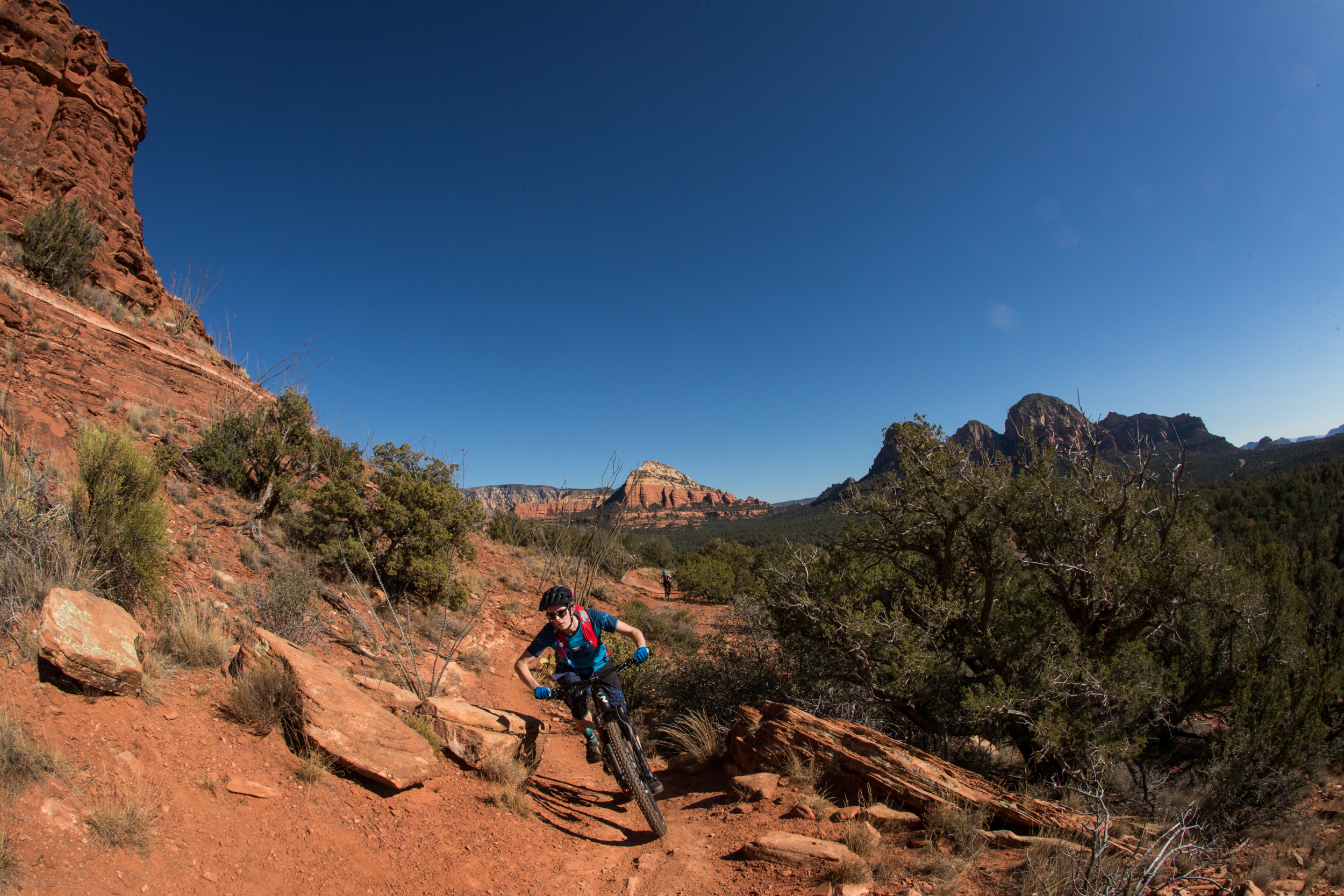
The Liv launch in Sedona, Arizona, gave me a chance to test out the bike on dry, rocky terrain, with a selection of rocky technical features. The first thing I noticed immediately was that I could get the front off the ground more easily than any other bike I have ridden. Heading out of the car park and onto the trails, I found that rock steps ups were much easier than I’ve previously found them, with steppy rocky climbs that I would usually have found myself pushing up being something I could actually conquer.
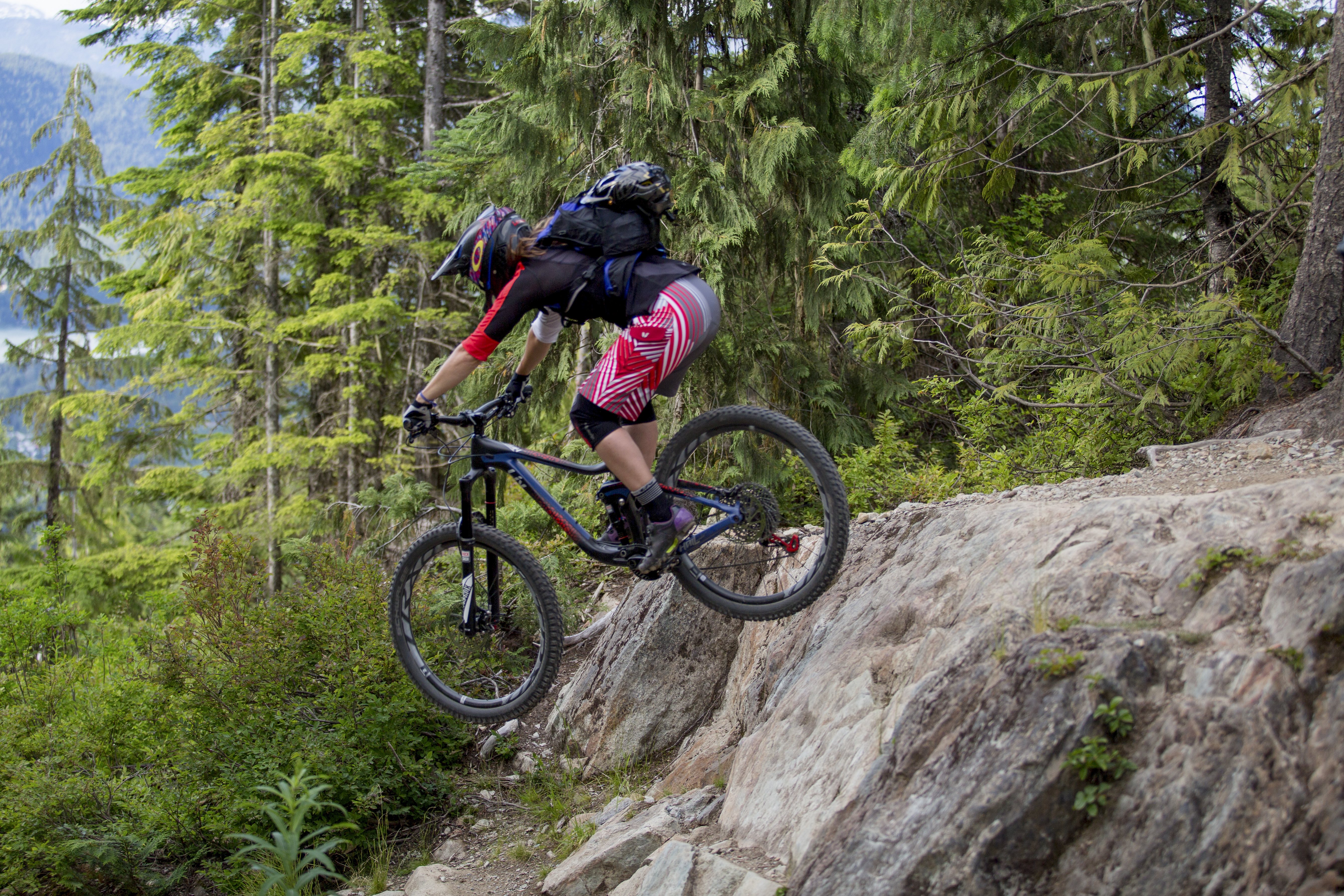
This was helped significantly by the high bottom bracket and pedal clearance. On a day’s rocky riding, I suffered only a couple of pedal strikes, and was able to power up and pedal through rocky sections rather than having to stall and ratchet my pedals to clear them.
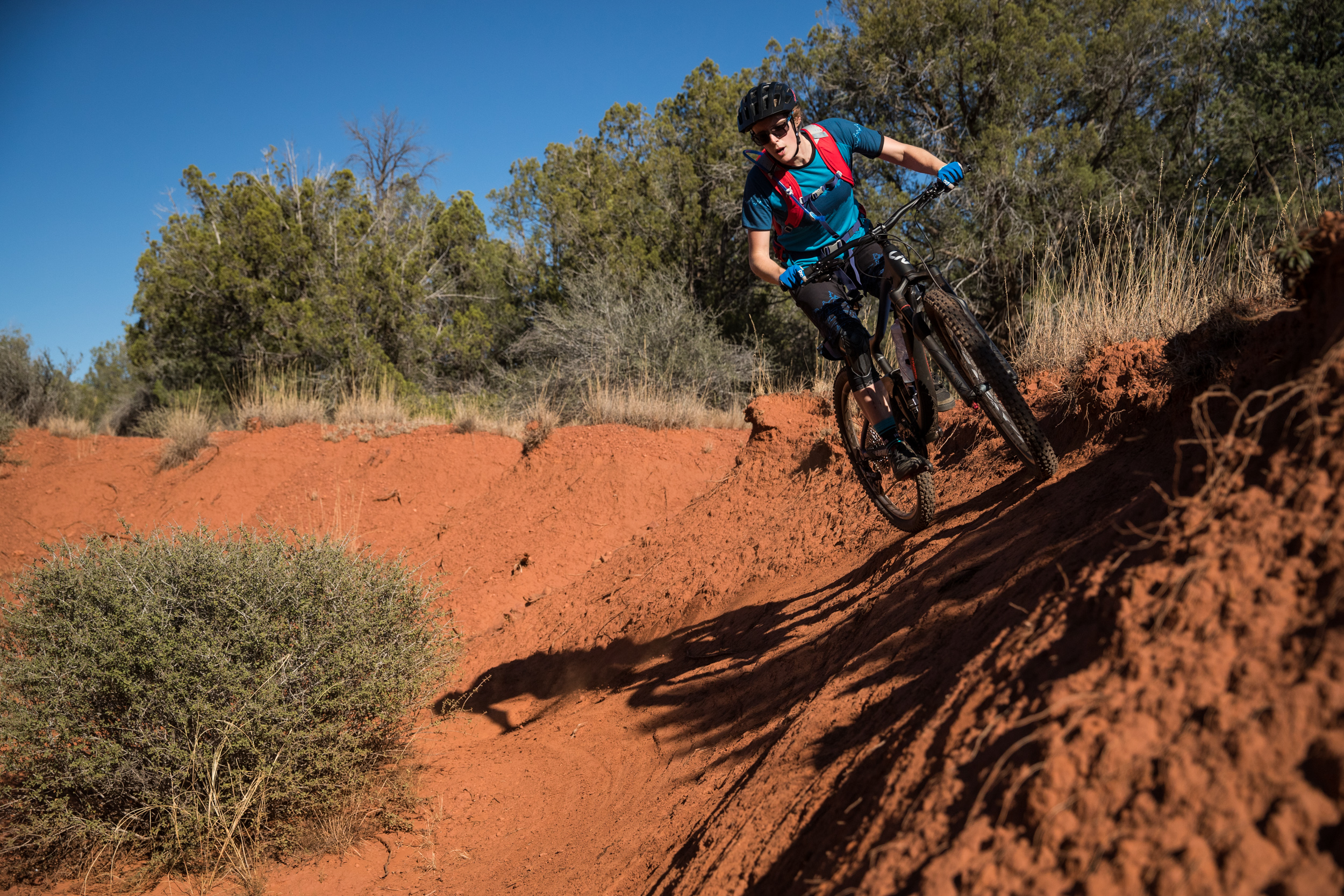
A side effect of the high bottom bracket is that the saddle is higher off the ground than on a bike with a lower bottom bracket, and stopping on some occasions I found it a little hard to get my foot down to the ground easily. Especially on rough climbs, I also found I had to lower my dropper in order to be able to get up onto the saddle and going again from a standstill. This may not suit some, but for me it’s a price I’m willing to pay as I really enjoyed being able to pedal up and through technical climbs without ratcheting.
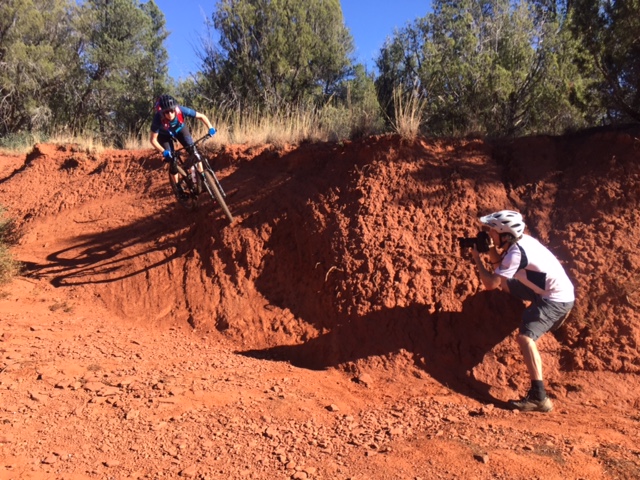
For a full suspension bike – let alone 160mm travel bike – the pedalling ability is excellent. It feels responsive to pedal, not sluggish, and I experienced no real feeling of bounce or loss of power, despite all that suspension. Reducing the fork travel to 130mm was easy and effective on climbs. The test trails didn’t offer the kind of steep and sustained climb I so often ride at home in Calderdale, and I didn’t find a use for the SRAM Eagle dinner plate gearing. However, I am keen to see just how well the Hail would perform on my local steep trails, as the signs are very promising.

Heading down hill, the Hail ate up the obstacles the trails offered up. Being in a dusty desert slick rock environment instead of the gritstone and mud conditions I’m used to, I found myself encountering features I’d previously never seen, never-mind ridden. However, the Hail had me feeling balanced and planted enough that I was able to ride everything, and I found myself finishing trails stunned at what I had just achieved. Rather than just making it down the trails in one piece, I was looking for bigger features, more interesting lines, and pushing myself to see just what I could do without overstepping my limits. My first effort at jumping off bigger drop offs went smoothly, and I’m left with a nagging regret that I didn’t try the even bigger drop (which was only for those who were already confident jumpers).
Suffice to say that on the trails I rode, the Hail impressed. However, before I go giving it a glowing report there’s a few queries I have for which I’d have to do further testing before I could give it a full review.
First up, the dropper bugged me. The remote is not a particularly thumb friendly shape, and the cable actuation seemed to require a reasonable amount of force. It’s also slick, and I suspect that wet UK weather would result in a fair amount of thumb slippage, while I also wonder how well the cable actuation would function after a few wet and gritty rides.
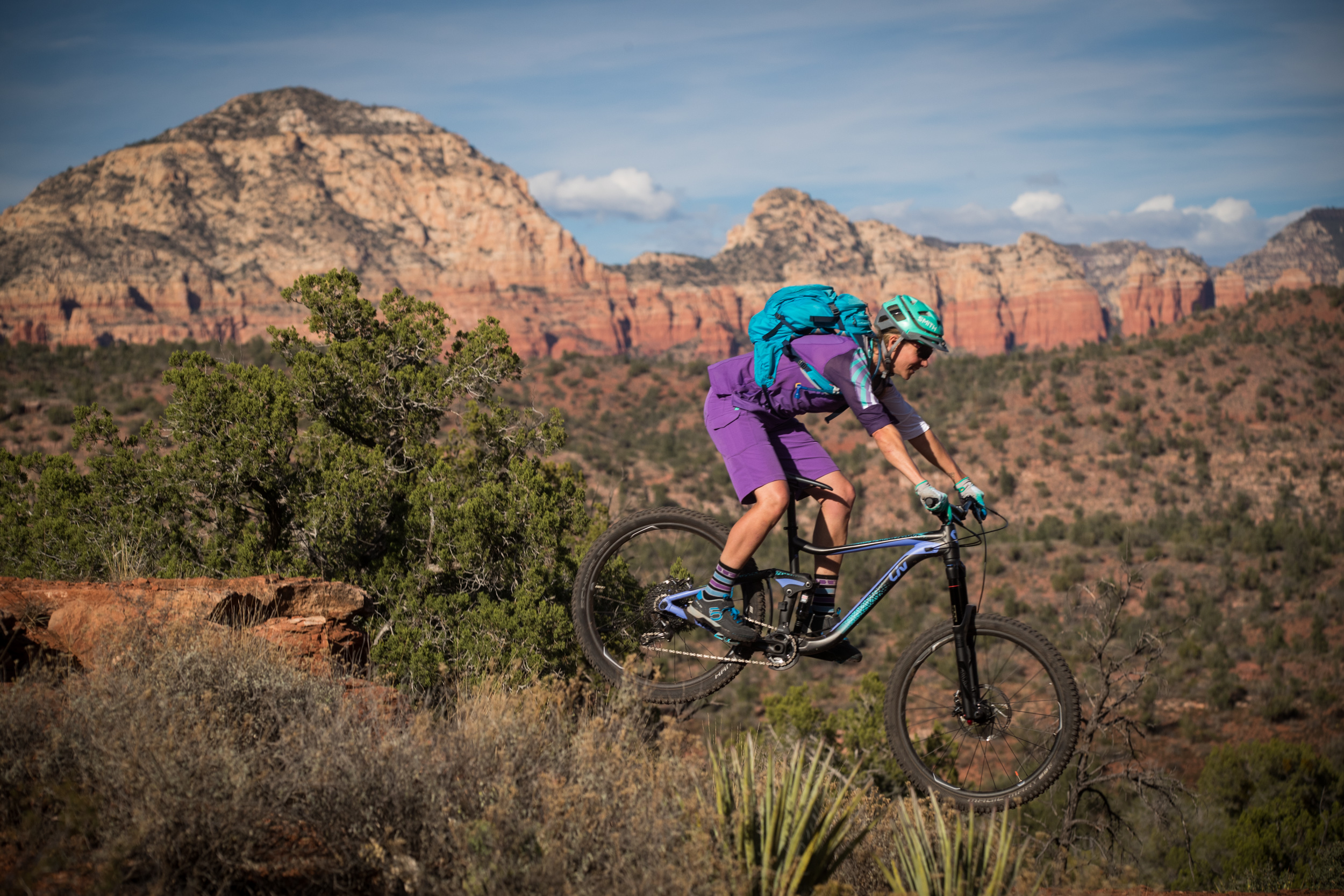
Being 175cm tall put me on the cusp between the large and medium sizes. I rode a large during the test ride, on which the 100mm dropper was the right size. I suspect that a medium would have had me wanting a longer dropper, and I wonder whether flexibility on this at point of sale might not be a benefit to those who want a smaller frame but still want their saddle down and out of the way.

As well as wanting to take the bike out on steep Calderdale climbs, I’d also like to be able to take the Hail down some steep Calderdale descents. This might help me settle my questions over the sizing – if I still felt balanced on a steep descent on the large I’d probably stick with the bigger size, as I did find it nimble. That said, Lindsey Voreis is about the same size as me and has gone for the medium – it might depend on the kind of trails you ride as to which size you opt for.
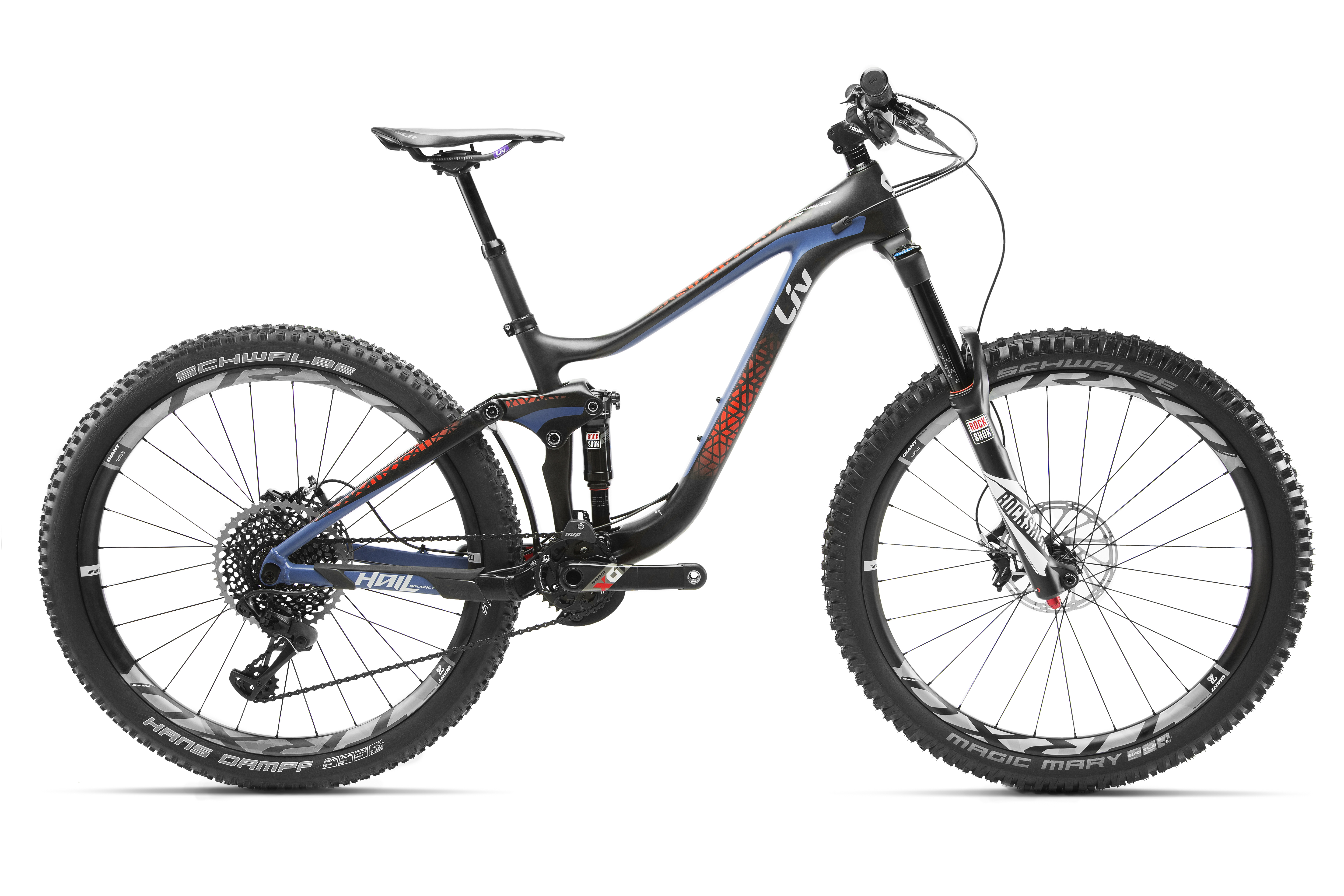
Another reason for wanting to get the bike out on the trails in Calderdale is mud. Despite the Boost hub spacing (it’s Boost front and rear), there’s not a massive amount of clearance at the back, and there’s a fair bit of complexity in the shapes around the bottom bracket and rear triangle. It would be good to see whether this is just a pain to clean, or whether performance is compromised in muddy conditions.
On the whole though, my reasons for wanting to get a Hail into the office for a proper testing are selfish – I had a whole heap of confidence boosting fun in the short time I got to ride it, and I want more of the same. More fun anyone? Hail yeah.
Comments (2)
Leave Reply
Post Comment

Wow, that is definitely a sick edit. I want. And I want to be able to ride that well!
One video I’ll not be showing my daughter now she’s nearly outgrown her Frog! But a great video.